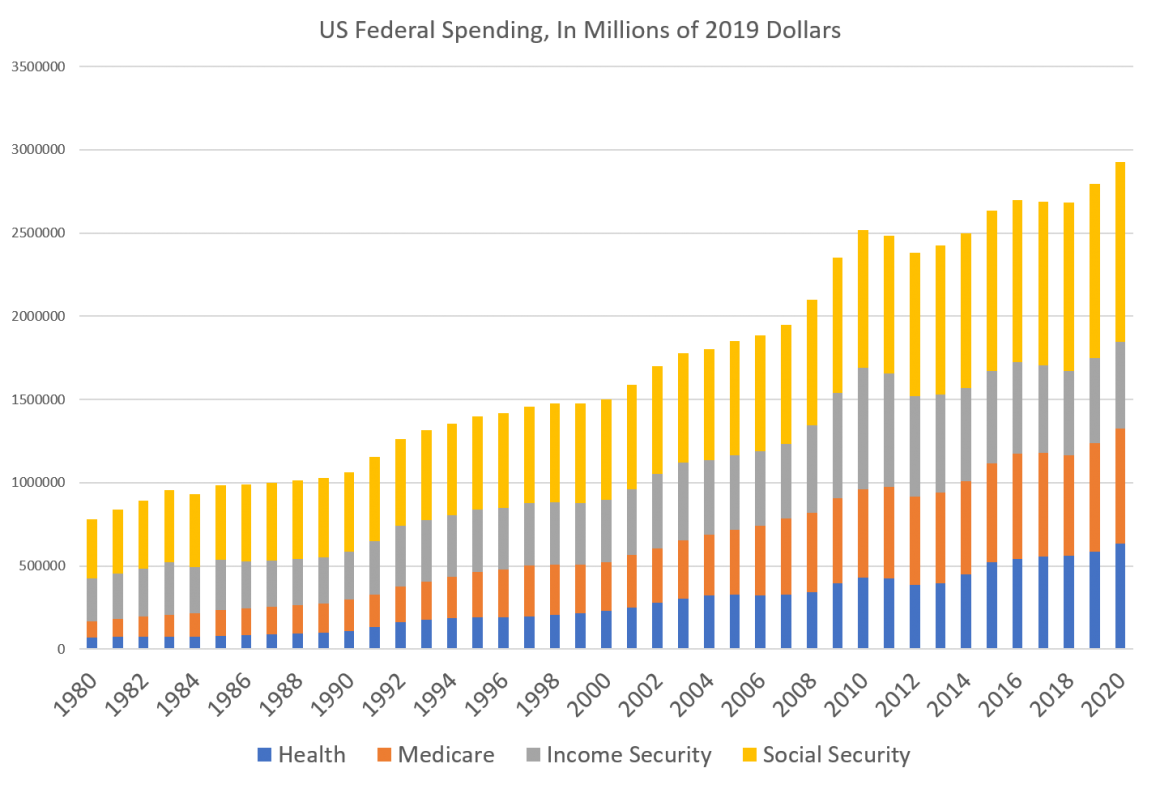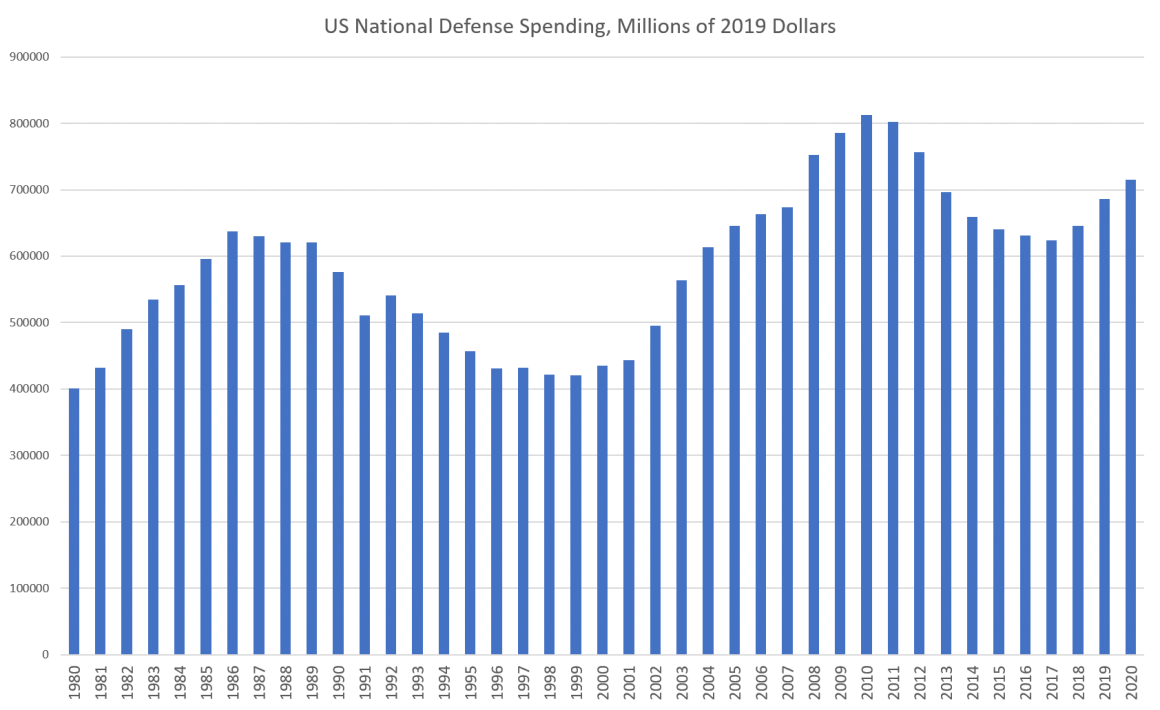The reality of federal spending under Donald Trump did much to put to rest the obviously wrong and long-disproved notion that Republicans are the political party of “fiscal responsibility.” With George W. Bush and Ronald Reagan, it was pretty much “full speed ahead” as far as federal spending was concerned. Under George W. Bush, some of the biggest budget-busting years were those during which the Republicans also controlled Congress. Trump, of course, carried the GOP’s spendthrift tradition far beyond any old levels in dramatic fashion, calling for untrammeled deficit spending, money printing, and a series of multitrillion-dollar bailout and “stimulus” packages. This time around, there’s little reason to assume the Democrats will depart from the GOP trend. After
Topics:
Ryan McMaken considers the following as important: 6b) Mises.org, Featured, newsletter
This could be interesting, too:
Nachrichten Ticker - www.finanzen.ch writes Die Performance der Kryptowährungen in KW 9: Das hat sich bei Bitcoin, Ether & Co. getan
Nachrichten Ticker - www.finanzen.ch writes Wer verbirgt sich hinter der Ethereum-Technologie?
Martin Hartmann writes Eine Analyse nach den Lehren von Milton Friedman
Marc Chandler writes March 2025 Monthly
The reality of federal spending under Donald Trump did much to put to rest the obviously wrong and long-disproved notion that Republicans are the political party of “fiscal responsibility.” With George W. Bush and Ronald Reagan, it was pretty much “full speed ahead” as far as federal spending was concerned. Under George W. Bush, some of the biggest budget-busting years were those during which the Republicans also controlled Congress.
Trump, of course, carried the GOP’s spendthrift tradition far beyond any old levels in dramatic fashion, calling for untrammeled deficit spending, money printing, and a series of multitrillion-dollar bailout and “stimulus” packages.
This time around, there’s little reason to assume the Democrats will depart from the GOP trend. After all, in the past year, expressing concerns about deficit spending or any other problem with runaway spending now is regarded as hopelessly old fashioned. It’s now de rigueur to spend a trillion here or a trillion there in addition to the usual gargantuan budget. We’re in the era of the new New Deal. Need an extra trillion? Just print it.
Nonetheless, while Democrats are likely to keep spending increases at the new ratcheted-up Trump levels, the Dems will have their own ideas about how to spend it. And this has been one of the primary differences between the two parties all along. Both parties love to spend money. They just like to spend it in slightly different ways.
The Myth of Budget Cuts
But even in this regard, differences in spending tend to be overstated and distorted. For example, now that Biden has released his new proposed budget, the White House is using the event as an opportunity to claim that during the Trump years, social spending endured years of cutbacks and budgetary neglect.
For example, White House spokesperson Jen Psaki today claimed the Biden administration was “inheriting a legacy of chronic underinvestment.” (In Washington-speak, “investment” just means taxpayer-funded spending.)
But just how significant were these alleged cutbacks in spending? Not very.
Inflation-Adjusted Social Spending Increased from 2016 to 2020The truth is under Trump, social spending in the “big four” categories of welfare spending—Social Security, Medicare, non-Medicare health spending, and “income stability”—increased approximately 17 percent from 2016 to 2020 (in current dollars). During that time, the consumer price index (CPI) increased 7.8 percent. In inflation-adjusted terms, spending in these categories increased from $2.69 trillion to $2.92 trillion during the same period. That’s an increase of 8.5 percent. In 2020, this social spending comprised more than 62 percent of all spending, and 72 percent on nonmilitary spending. In other words, social programs were hardly forced to endure anything we might call being “gutted” or “slashed.” (Keep in mind that these numbers do not include the additional trillions spent on a variety of “emergency” and “stimulus” programs. We’re just talking about the ordinary, budgeted spending here.) |
US Federal Spending, In Millions of 2019 Dollars Source: White House Historical Tables, Table 3.1. - Click to enlarge |
| The only category here that saw a real decrease was “income security” which includes unemployment insurance spending, food stamps, and similar programs. But that doesn’t mean all welfare programs took a hit. Spending on Medicaid and other programs targeted at low-income households (labeled “health” in the graph) increased by 16 percent (inflation adjusted) from 2016 to 2020.
Advocates for social spending, however, insist they’re the victims because from 2016 to 2020 military spending (in 2019 dollars) increased 22 percent, well surpassing total growth for social-spending programs. |
US National Defense Spending, Millions of 2019 Dollars Source: White House Historical Tables, Table 3.2. - Click to enlarge |
And it is this fact which helps fuel the incorrect notion that social spending is a victim of “underinvestment” because it didn’t increase as fast as military spending.This is how talk about government spending works in Washington. Welfare spending, military spending, and total spending—which skyrocketed thanks to covid relief spending—all clearly outpaced inflation from 2016 to 2020. Yet, in Washington, all spending is supposed to expand at the rate of the most rapidly increasing category. Anything that doesn’t “keep up”—even if its actually experiencing spending increases—is said to be falling behind or neglected. Thus, since military spending increased quickly during this period, social spending must increase at least as fast, or else it is a victim of “underinvestment.” So, now that Biden is president, the new budget proposals will—as the Washington Post puts it—“flip the script” on budget priorities. Now the administration will finally give some much-needed attention to these portions of the federal budget that have allegedly been allowed to wither on the vine.
But for anyone who hasn’t drunk the Washington, DC, Kool-Aid, it’s clear there’s been no lack of spending and no underinvestment going on, whether we’re talking about military spending, social spending, or anything else. All of these programs are clearly awash in what used to be the taxpayers’ money, and no one in Washington is in danger of losing much at all in the way of “investment.”
Tags: Featured,newsletter





